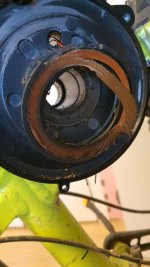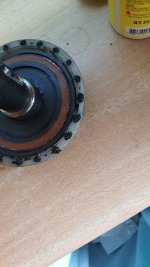casainho
10 GW
- Joined
- Feb 14, 2011
- Messages
- 6,045
Just to give an update on the TSDZ2 EBike wireless project, with some good news because my Garmin GPS cycling computer now detects and connects to the TSDZ2 wireless board!! -- all the information on the project page: https://github.com/OpenSource-EBike-firmware/TSDZ2_wireless
Very first testing firmware that works: the wireless board nRF52840 is implementing the ANT+ LEV Ebike profile and the Garmin Edge cycling computer is detecting and connection to the EBike wireless board. Also, when starting an EBike activity, there is available a screen specifically to see EBike data and, is possible to select the assist level.
[youtube]YYaG6Zjt1xo[/youtube]
Very first testing firmware that works: the wireless board nRF52840 is implementing the ANT+ LEV Ebike profile and the Garmin Edge cycling computer is detecting and connection to the EBike wireless board. Also, when starting an EBike activity, there is available a screen specifically to see EBike data and, is possible to select the assist level.
[youtube]YYaG6Zjt1xo[/youtube]



